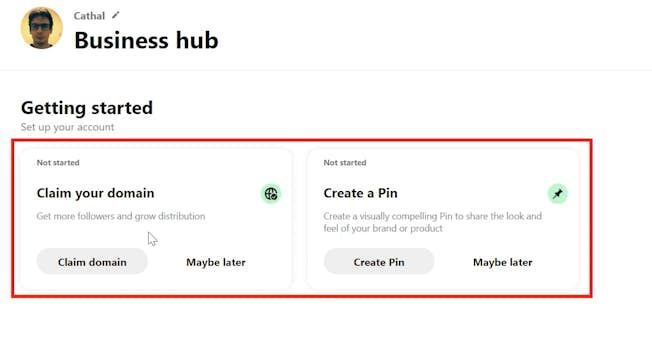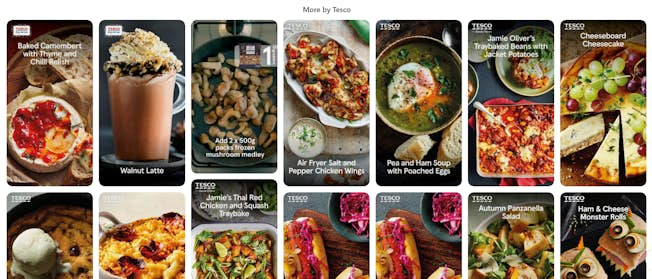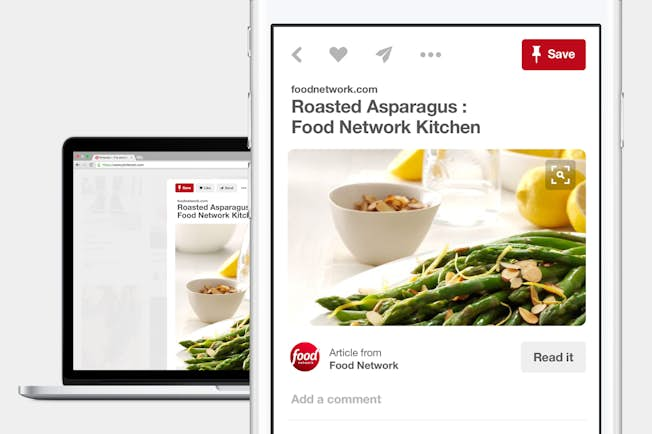If you work for a brand or own a business that creates great images or visual content, Pinterest could be a great network for you. A visual discovery platform, Pinterest is a simple way for people to get inspiration by creating mood boards using ‘pins’.
With 445 million monthly active users according to Statista, Pinterest is the 14th largest social media platform ahead of Twitter and Reddit. It’s also popular amongst women (76 percent of its users are female according to Hootsuite) so it’s a channel to think about if you’re looking to target that audience.
But as with any social media network, it’s important to understand how your content performs so you can tweak and optimize. That means you need to know how to use Pinterest analytics to gain insights for your content and strategy. Let’s find out how to get the best from the platform using analytics.
Claim Your Pinterest Account
To access analytics, you must confirm you have a business account. If you don’t have a business account, a prompt to upgrade to a business account will appear in the right upper hand corner of your Pinterest page.

Just click it and follow the easy steps to upgrade. You can then claim your website to ensure that your profile photo and logo show pins from your site. Once this is done, you’ll find 'Analytics' in the upper right-hand corner of the drop-down menu.
Once you’ve created or converted to a business account, you can also:
- Install a ‘save’ button so users can Pin from your website and you can get analytics on referral traffic from pins
- Add a tag to track any actions a user takes after seeing your promoted (paid) Pins
- Add Rich Pins for your products, articles and apps
Read: Check out our ‘Walkthrough Guide: Pinterest for Business Setup’ to get guidance on how to do this.
What Should You Measure on Pinterest Analytics?
You will find a lot of information provided by Pinterest. This data can then be broken into categories for you to understand how to read the numbers.
In 2021, Pinterest generated $2.5 billion in revenue, which is a 56% increase year-on-year reported by the Business of Apps so it’s worth understanding what content resonates with users.
According to Pinterest, you can use its analytics to
- Review specific Pins: Click ‘All Pins’ to see your overall performance or select Standard Pins, Product Pins, Idea Pins or Video Pins to review a specific format
- Filter results: Use the filter panel at the left side of your screen to view your content by date range, claimed account(s), content type, product group, device, age, gender, source and format
- View top Pins or boards: Scroll down to see your top boards or top Pins by impressions, engagements, Pin clicks, outbound clicks or saves
- Export your data: Click ‘Export’ to get a snapshot of selected data (CSV file format)
As a beginner, there are six metrics you should track and monitor regularly.
1. Pins
Under the 'Metrics' tab, you will find Pins created from your website’s content. This number is important as it shows you the average amount of daily content pinned from your website.
It will show you if your website content is worthy of pinning to your boards. If you are not showing the numbers you’d like to see, then it is time to rethink your visuals. Create great content that will attract and engage Pinterest users to increase your Pin clicks and click rate. Here’s an example of supermarket chain Tesco’s Pins organized into categories.

You should also consider moving your 'Pin It' button, so people will see it and be more inclined to click it. Alter your visual content and then keep track to see if you notice changes for better or worse. Pay attention to time periods so you can identify the content you changed at that time as that will allow you to determine what is working well and which campaigns ran better than others.
You can then use that as an example of what your content should look like to get more pins. Likewise, if content sees a drop in pins, then your visuals are not working well. Keep trying new ideas and optimize your content to see what works best.
2. Saves (previously known as Repins)
You will find this metric on the 'Site Metrics' tab. Saves are highly desirable as they help encourage engagement. When users save content to their boards, it allows their followers to see it in their feeds. That provides more exposure to people not following your account.

You will see the daily average number of saves, which is an indicator of how well your visuals are working. You can compare your pins to your saves, so you can get a feel for how well you are doing at reaching a broader audience. Saves are a bonus and a great way to grow your audience.
3. Impressions & Engagements
Impressions measure the number of times your Pins were shown to a user. Pins can appear on your homepage, in search results, or on another user’s board. Like all social media networks, remember that one user can account for multiple impressions.
Impressions are a big deal as they tell you how often people see your Pins. Getting a high Pin impression rate means your content is resonating or on-trend (and also liked by Pinterest’s algorithm).
The Engagement metric shows the total number of engagements your Pins are getting. This includes saves, Pin clicks, outbound clicks, carousel card swipes, collections clicks, and Idea Pin forward/backward swipes.
You can also use this metric with the total audience number to calculate the engagement rate. This will help you to understand the content that people are engaging with so you can create more of it.
“ 8 out of 10 people who use Pinterest says it makes them feel positive” Pinterest data
4. Page Visits and Views
Scroll to the end of the metrics tab to see what traffic Pinterest helped drive to your website through ‘Page Visits’. While some pins help gain followers or engagement, others drive traffic. You can measure it against ‘Add to cart’ and ‘Checkout’ metrics to see if your website is performing.
Views can be seen as monthly views and video views (yes, Pinterest does promote video content with Pinners watching nearly one billion videos a day). Video views count as the number of views for at least 2 seconds with 50% of the video in view.
These metrics enable you to see what actions people take based on the content. Ideally, you want both types of engagement to determine what pins send people to your website and adjust content to see improvements in this type of activity.
Examples of visuals that work well to get people to visit your site might include calls to action, how-to instructions, or stunning images.
You want new and returning visitors to gain customers and expand your reach. New visitors can also expand reach on Pinterest with the chance of 'Saves'. Also, if they are returning from Pinterest, this means they are finding your content valuable, and that's what you want.
5. Top Converting Pins
It’s important to measure your top Pins based on different conversion goals which can be found under ‘Conversions’. These goals include impressions, Pin clicks, saves, Page visits, Add to cart, and Checkout.
This metric will show the performance of your pins in driving particular actions. For example, if you’re looking to drive website traffic then look at which type of pins are effective at doing that and why. If some Pins outperform in every category, you may have found the secret to Pinterest success!
Look for patterns in your content such as the types of images, colors used (design fundamentals), the kind of text, and anything that stands out with similarities you can use to plan more similar content. That will allow you to gain more exposure with your account providing consistent content that people consider of value.
Remember: You can use SEO to help your Pins show up in search results. Read our blog on ‘5 Ways to Maximize SEO and Social Media’ for more information.
6. Audience analytics
In your social media marketing, it’s important to know your audience (or buyer persona) and Pinterest is no different. Thankfully there are some great metrics you can tap into to learn more about your followers and other Pinterest users.
- Demographics - This gives you insight into the demographics such as gender, device, preferences, etc.
- Conversions - This informs you of organic and paid pins so you can measure CPA and ROAS
- Page visits - As mentioned before, this is the number of people visiting your site from Pinterest (this could be useful in light of shoppable posts using Product Pins)
- Affinity - This tells you how much an audience cares about a topic so you can tap into trends and hot topics.
- Add to cart and checkout - These metrics track activity after someone has clicked on your link on Pinterest. The first tracks the number of times people have added items to their cart while the other tracks purchases.
- Trends - Pinterest Trends allows you to see what content is popular and you can filter it by location, keywords, gender, and some other factors.
Use Pinterest to Drive Engagement & Sales
Pinterest is an effective platform for visual content and offers great opportunities to connect with an audience. Learn how to use social media to increase brand awareness and drive leads with DMI’s social media marketing course. Cover areas such as social research, analytics, social strategy, and even social customer service to drive your social media strategy. Get started today!
Related
- Categories:
- Articles
- Social Media Marketing
- Data and Analytics
Upgrade to Power Membership to continue
your access to thousands of articles, toolkits, podcasts, lessons and much much more.
Become a Power Member- Login
- View Courses
- - - -
- Courses
- Resources
- - - -
- My Account
- Change Password
- Logout




